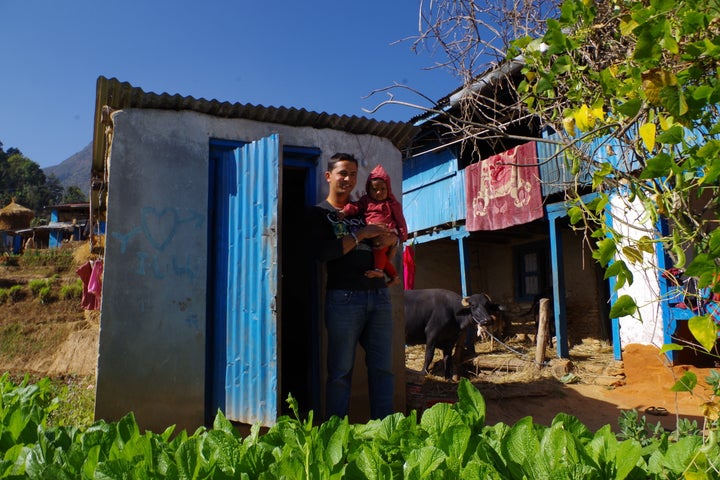
“Flush and forget.”
“Out of sight, out of mind.”
With the invention of sewered sanitation, this has been the attitude of many of us to our wastewater. Since the health of our societies improved, we weren’t too flustered. After all, British Medical Journal readers once chose the “sanitary revolution” as the greatest medical advance since 1840.
Unfortunately, the revolution had a dark side: what went in inevitably came out, increasingly ending up where we live, work and play.
Today, for billions of people around the world, sanitation systems are still either non-existent or ineffective. In fact, our natural environment – the lands we occupy, and the groundwater, lakes, rivers and seas near us – receive a significant amount of this human by-product each day. The United Nations World Water Assessment Programme says over 80% of wastewater is released to the environment without adequate treatment[i]. Put another way, our urban and rural sanitation and wastewater services, especially in developing countries, are not effectively preventing human contact with excreta – our poo -- along the entire sanitation chain.
This puts the health of all people – but especially young children – at risk for diseases such as diarrhoea. Every year, 361, 000 children under 5 years of age die due to preventable diarrhoea[ii]. Poor sanitation and contaminated water are also linked to the transmission of diseases such as cholera, dysentery, hepatitis A, and typhoid.
So, we’re a long way from the ‘safely managed’[iii] sanitation for everyone aimed at in United Nations Sustainable Development Goal 6 on Water and Sanitation. Those most at risk: the 4.5 billion people who either have no toilet at home or have one that doesn’t safely manage excreta[iv]. To raise awareness of the issue, UN Water, which works to improve the coordination between, and effectiveness of, United Nations bodies involved in water and sanitation, is advocating on World Toilet Day (Nov. 19) for all of us to consider “Where Does Our Poo Go?”
(I will allow you a moment to snicker: yes, there is a World Toilet Day. And yes, this really was the theme.)
This World Toilet Day looked beyond achieving sanitation for all as an end but at making access to safe and improved sanitation and hygiene sustainable for all. Good management of human waste –the technical term is Faecal Sludge Management (FSM) -- is the safe collection, transportation and treatment of human waste from sanitation installations. FSM needs to be the focus of governments and others, including businesses and non-governmental organizations.
One group, the Toilet Board Coalition, released several reports in connection to World Toilet Day and is driving a positive, proactive dialogue to “accelerate the sanitation economy” that encourages self-sustaining businesses and investments in sanitation. They, and many others, are tapping into the potential of waste as a resource.
Human waste can in fact become energy in the form of biogas made into solid fuel. It can also be [v]converted into agricultural compost, organic fertilizer and soil conditioner. We can extract water from human waste since faecal matter is 75% water and urine 95%. (Don’t believe me? See this groundbreaking research from the Bill and Melinda Gates Foundation.)
This means that for 45% of the world population that lives in rural settings, human waste can produce natural gas for cooking and heating instead of firewood, which helps preserve forests. By extension, this reduces the workload of women who often spend time looking for firewood, and allows them to use their time to engage in other income-generating activities. It also provides an alternative energy source for households, including light sources.
It is possible to involve community-based approaches to safely re-use faecal matter, especially for low income urban areas or rural communities. This new ‘sanitation economy’ is gaining traction among local communities with social enterprises like Clean Team in Ghana using the potential of container-based sanitation systems or Sanergy in Kenya, which turns waste into organic fertilizer.
On World Toilet Day, we’re reminded that our planet needs practical and alternative solutions to provide safe sanitation for all. It is our collective responsibility to make this a development priority.
[i] 2012. The United Nations World Water Development Report 2012: Managing Water under
Uncertainty and Risk. Paris, United Nations Educational, Scientific and Cultural Organization
(UNESCO).
[ii] Don’t pollute my future! The impact of the environment on children’s health. Geneva: World Health Organization; 2017. Licence:CC BY-NC-SA 3.0 IGO
[iii] Hutton, G. and Varughese, M. 2016. The Cost of Meeting the 2030 Sustainable Development Goal Targets on Drinking Water, Sanitation, and Hygiene. Technical paper. Washington, DC, World Bank/Water and Sanitation Programme (WSP). elibrary.worldbank.org/doi/pdf/10.1596/K8543
[iv] WHO/UNICEF (2017) Progress on drinking water, sanitation and hygiene: 2017 update and SDG baselines
[v] The Toilet Board Coalition Sanitation In The Circular Economy
